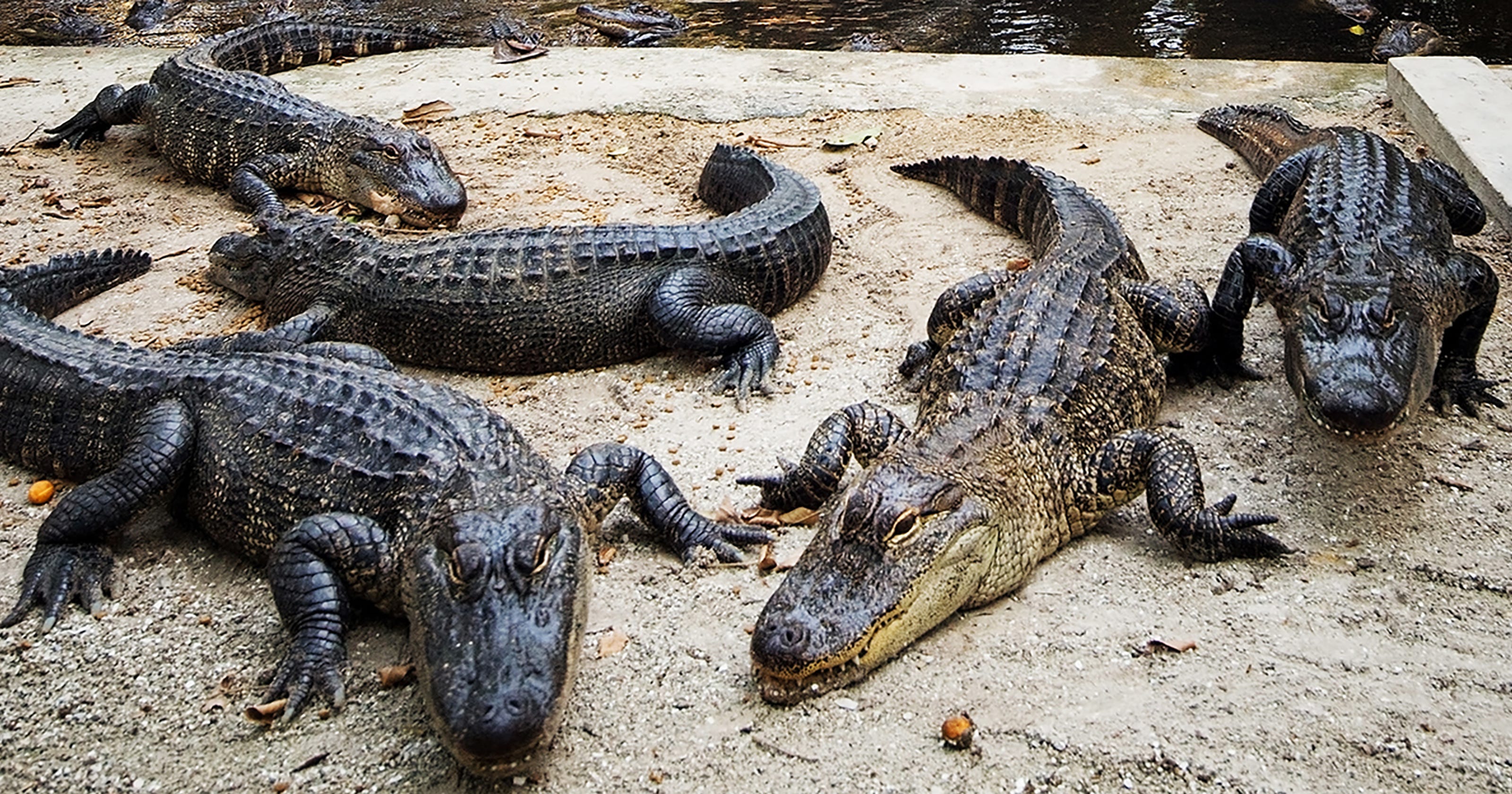The word "alligator" comes from the Spanish word "el lagarto," which means "the lizard." This is because alligators were originally thought to be a type of lizard, but they are actually more closely related to crocodiles.
There are two species of alligators: the American alligator (Alligator mississippiensis) and the Chinese alligator (Alligator sinensis). American alligators are found in the southeastern United States, while Chinese alligators are found in the Yangtze River basin in China.
Alligators are large, semi-aquatic reptiles that can grow up to 15 feet long and weigh up to 1,000 pounds. They have long, powerful bodies with short legs and a tail that is about half as long as their body. Their skin is thick and tough, with a rough, scaled texture. Alligators have a broad head with a long, pointed snout. Their eyes and nostrils are located on top of their head, which allows them to see and breathe while most of their body is submerged in water.
Alligators are carnivores and their diet consists mainly of fish, turtles, snakes, frogs, and small mammals. They are ambush predators and will typically wait for their prey to come close before striking. Alligators have a powerful bite that can exert up to 2,000 pounds of pressure per square inch. They can also hold their breath for up to an hour, which allows them to hunt underwater.
Alligators are solitary animals and only come together to mate. Mating season occurs in the spring and females will lay a clutch of 30-60 eggs in a nest that she has built out of mud and vegetation. The eggs hatch after about 65 days and the young alligators will stay with their mother for about a year.
Alligators are an important part of the ecosystems in which they live. They help to control populations of prey animals and their presence can help to keep waterways free of debris. Alligators are also a popular tourist attraction and can be found in many zoos and wildlife parks around the world.
History of Alligators
Alligators have been around for millions of years. Fossils of alligators have been found that date back to the Cretaceous period, which was over 100 million years ago. Alligators are thought to have evolved from a group of crocodiles that lived in North America.
When the first Europeans arrived in North America, they encountered alligators and were fascinated by these strange and powerful creatures. The Spanish explorers who first came to Florida called alligators "el lagarto," which means "the lizard." This name eventually made its way into English as "alligator."
In the early days of European settlement in North America, alligators were often hunted for their meat and hides. However, they were also seen as dangerous creatures and many people were killed by alligators. In the late 19th century, alligators were nearly hunted to extinction.
Fortunately, conservation efforts have helped to bring alligator populations back from the brink of extinction. Today, alligators are protected in many parts of the United States and their numbers are slowly increasing.
Alligators in Culture
Alligators have been featured in human culture for centuries. They are often depicted in art and literature, and they have even been featured in some popular movies and television shows.
In Native American culture, alligators are often seen as symbols of power and strength. They are also sometimes seen as trickster figures, which is reflected in the stories that are told about them.
In European culture, alligators are often seen as dangerous creatures. They are often depicted as symbols of evil or danger. However, they are also sometimes seen as symbols of fertility and rebirth.
Alligators Today
Today, alligators are found in a variety of habitats in the southeastern United States. They can be found in freshwater rivers, lakes, and swamps. They can also be found in saltwater habitats, such as the Gulf of Mexico.
Alligators are an important part of the ecosystems in which they live. They help to control populations of prey animals and their presence can help to keep waterways free of debris. Alligators are also a popular tourist attraction and can be found in many zoos and wildlife parks around the world.

